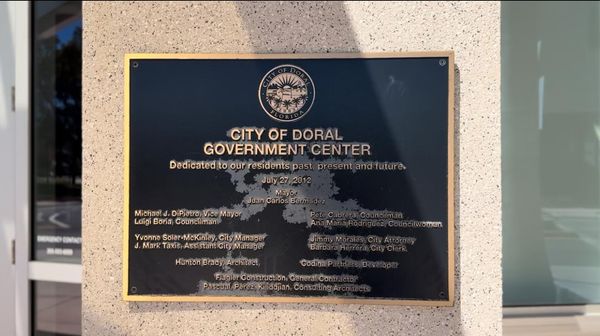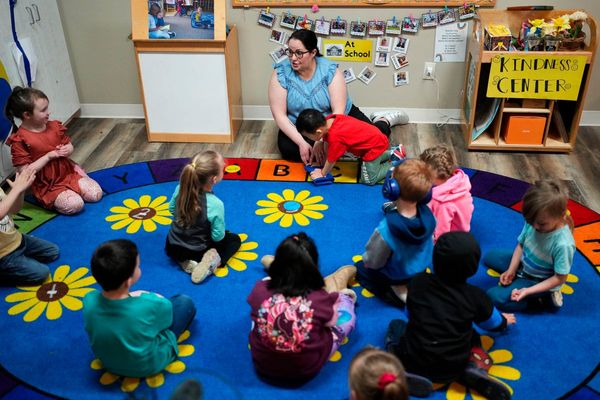
As real estate in the United States remains strong despite rising interest rates, market analysts interviewed by Al Jazeera predict that the next housing crisis will centre around Americans locked out of homeownership.
“That’s our big problem going forward,” Mark Zandi, chief economist at Moody’s Analytics, a research firm based in New York City, told Al Jazeera. “It’s not going to be a crash in house prices; it’s going to be getting people into homeownership so they can build wealth. I think younger people are going to have a great deal of difficulty.”
The coronavirus pandemic sparked a home-buying frenzy as millions of Americans across the economic spectrum, working from home, set out in search of more space. Low interest rates fuelled the purchasing spree.
“You had very few homes and a lot of people that were going to try to buy them,” said Nicole Bachaud, an economist at Zillow, a tech real-estate marketplace company in Seattle, Washington.
Purchasing a home has become much more expensive recently as the US Federal Reserve raises interest rates to fight runaway inflation. Rates for a 30-year mortgage recently neared 6 percent, after dropping to 2.65 percent in January 2021.
And real estate agents say they are already seeing cracks in the housing market.
“We’re seeing price reductions a little bit more frequently than we had before,” said David Berger, real estate agent at Compass, a broker agency in New York. “We’re seeing listings stay on the market a little longer than a year ago, even six months ago.”
Inflation, a bear market on Wall Street after the S&P 500 dropped 20 percent, free-falling cryptocurrencies, war in Ukraine, and high fuel and food prices may evoke memories of the 2007-2008 real estate crash, but experts Al Jazeera spoke to said the market is very different this time. Here are five things to know:
1. Don’t expect a housing crash like the one we saw in the 2007-2008 financial crisis
In 2005 and 2006, US banks lent money to “low-quality borrowers” with very low credit scores, Zandi of Moody’s explained. Borrowers signed up for two-year adjustable mortgages, which meant that their interest rates would rise after two years due to their poor credit. Fraud by mortgage brokers, appraisers and real estate agents to secure loans was also prevalent.
The subprime mortgage crisis resulted in a surge of defaults and, eventually, large price drops. As these mortgages were packaged into a tradable financial asset or securities and sold on the global market, the housing tsunami hit global markets.
Mortgage lending has been pristine ever since the financial crisis, Zandi explained, because of changes in regulation.
“Today mortgage products are very plain vanilla – 30-year and 15-year fixed rate loans,” he added. “We’re just not going to see the kind of defaults, foreclosures and distressed sales that lead to big price declines.”

The housing market is undersupplied, with vacancy rates for single-family homes near record lows. Institutional investors like hedge funds and mutual funds are interested in purchasing homes and are unlikely to sell. They are purchasing with the intention of holding.
Plus, the majority of American homeowners refinanced between 2020 and 2021, when interest rates were low.
“Those people who own a home right now have pretty low mortgages – they’re not worried about affordability,” Zillow’s Bachaud said. “We’re seeing an affordability crisis with people trying to get into homeownership. That is the big difference between this market and what happened in 2008-2009.”
2. No, housing prices will not plummet
According to Zillow, the price of the average home in the US is $350,000 – up 20.7 percent from a year ago.
“A lot of people are thinking, ‘We’ve seen so much growth, it has to come down from here,'” Bachaud told Al Jazeera. “But what we’re really seeing is that things are just starting to balance out a little bit faster than we might have expected if interest rates hadn’t risen so quickly.”
Home prices in some US markets jumped even higher. In Phoenix, Arizona, the average home cost $264,000 in March 2020 compared to $433,660 today. In Tampa, Florida, the median price is now $408,997 up from $253,000 in March 2020.
“We didn’t have enough homes, and a lot of people were trying to buy them so that pushed prices way up,” Bachaud said, referring to the pandemic buying frenzy. “The time homes were staying on the market – between when a house is listed and when it is pending – in a lot of places was less than a week.”

3. People are going to be less willing to sell their homes now, too
Home price appreciation is expected to remain in the double digits at least until the end of 2022, experts said. Currently, annual home appreciation is at 17 percent, according to the American Enterprise Institute, a think-tank based in Washington, DC.
“But a 10 percent home appreciation is going to feel a lot different than the 20 percent homeowners have seen in the last two years,” Bachaud added.
As a result, people may be less likely to sell their houses.
“They’re not going to give up so easily on the high valuation of their home they may have seen in the last two years, so the number of transactions will fall very sharply,” Zandi of Moody’s predicted.
4. The American dream of owning a home may be a pipe dream for young people
Millennials, those born between 1981 and 1996, are being locked out of homeownership due to a lack of available housing, price increases, wage stagnation, and skyrocketing student debt.
“Young people are having a hard time saving for a down payment, typically 5 to 20 percent of the purchase price,” Zillow’s Bachaud said.
And with today’s higher interest rates, a monthly mortgage payment is more than 50 percent higher than it was a year ago.
During the pandemic, when the government eased monetary policy and doled out trillions of dollars to encourage spending and keep the economy afloat, 30-year fixed-rate mortgage interest rates fell as low as 2.65 percent.
“Just consider the difference between a 3 percent interest rate and a 6 percent interest rate on a $350,000 home,” Bachaud explained. “That’s an extra $500 in interest that homeowners are expected to pay every month.”
Young people simply cannot compete with cash-rich investors, both institutional and foreign, who do not need a mortgage and are purchasing rental properties.
Rents have soared across the US since the pandemic. For example, the median rent in Dallas, Texas is $2,045, up $420 in the last year. In Miami, Florida, median rents are $4,000, up $1,500 compared to last year.
Compass’s Berger, who relocated to Miami from New York during the pandemic and witnessed the South Florida boom firsthand, told Al Jazeera that the city’s real estate has no plans of slowing down.
“Miami is now a city that drives demand, attracts international buyers and talent from all over the country,” he said.
Zandi from Moody’s Analytics noted that lawmakers “can try to incentivise builders to build more affordable rentals”.
“Affordable rentals,” he said, “are critical to homeownership because it allows people to save for a down payment.”

5. There is a lot of uncertainty right now
The S&P 500 entered a bear market in 2022, having suffered its worst first six months since 1970. Cryptocurrencies plummeted, with the world’s largest digital coin, Bitcoin, losing more than 55 percent this year.
Supply-chain issues and the war in Ukraine, which has compounded soaring food and fuel costs, are both making Americans cautious and wary about their spending habits. These factors also weigh on someone’s decision to make a large purchase like buying a house.
Still, there is reason to be optimistic about the real estate market, analysts said.
“Unemployment in the US is at a historic low. People have jobs. We don’t have subprime mortgages. The risk of being unable to pay mortgages and foreclosures is relatively low,” Compass’s Berger told Al Jazeera.
“If we can get inflation under control, and perhaps the war in Ukraine resolves itself, I think that will stabilise not just equity markets, but markets overall. All markets want is stability; uncertainty makes everyone crazy. And there’s a lot of uncertainty right now,” he explained.
Even though he admits the US economy is slowing, Zandi from Moody’s Analytics is bullish about the long term.
“The dollar is about as strong as it ever gets,” he said. “I mean, we’re now at parity with the euro and even against the Chinese yuan. We’re driving the train right now; we’re keeping the global economy moving down the tracks.”







